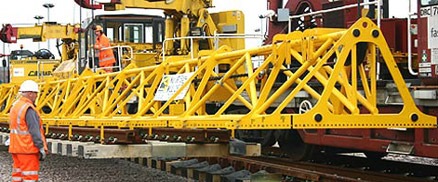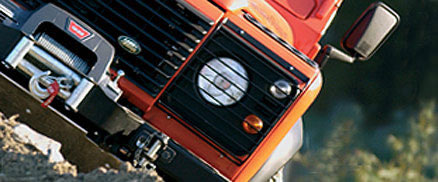April 21st, 2011
Railways have been an essential part of the infrastructure of most western countries for several decades. In the UK, railways are used constantly to transport people and goods and are essential to the economic well being of the country.
However, few people realise how much work goes into keeping our vast network of railway tracks safe and well maintained. There are several elements involved in track maintenance. Here’s a quick guide to track maintenance and safety:
Railway tracks need to be cleaned regularly but several of the methods used can cause damage. For example excessive cleaning of tracks can cause scratching and can attract more dust to settle.
Metals that are used for tracks need to go through a series of processes before they are ready such as heating and cooling processes. It is only once they have been carefully treated that they are ready to be used as train tracks.
The ballast of the track (the space between the rails and the ties) should be smooth to ensure that the rails are parallel. If the ballast is not smooth it can cause uneven or disrupted rail tracks.
General wear and tear can be a problem and needs to be carefully monitored.
Rails should be securely attached. If they are too loose they can cause the rail wheel to ‘bounce back’ which can result in an extremely bumpy journey or even derailment.
There are several ways to carry cleaning and safety equipment along train tracks, for example rail skates.
Rail skates can be used individually or in pairs and clip on attachments can be fitted to increase the carrying capacity.
Keeping rail tracks clean and safe requires immense precision and skill. There are several types of safety equipment that need to be involved in the process, and various machinery which can help with the job.
Railway track maintenance is extremely important for both passengers and goods and performing the correct safety assessments can prevent catastrophes from happening. Professional railroad contractors and professional railroad safety equipment providers help to ensure that the UK’s vast network of tracks is kept safe.
Posted in Arbil Rail |
April 21st, 2011
Off Roading can be a fantastic and exciting experience, but just as there are rules of the road in towns and cities, there are rules that apply to off roading. Most of these rules are designed to keep you safe and you can be sure that if you follow them it can only make your off roading experience more enjoyable. So follow these simple off roading rules and make sure that you stay safe while you have the time of your life.
- Stay right to avoid oncoming traffic. If there is only room for one vehicle to pass then it’s generally the more experienced driver who should give way – but use your common sense
- When two vehicles meet on a hill and there is no safe place to pull over then the vehicle going up the hill has the right of way.
- When driving your goal should be to have as little impact on the environment as possible
- Keep the driver’s side of the vehicle close to any obstacles when driving through, but don’t forget to keep an eye on the rest of the car.
- Heavily used tracks can cause your undercarriage to get stuck. Try driving with one wheel on the middle hump if you find this is happening.
- When driving in mud, snow or deep sand, deflate your tyres slightly, this will give them a greater surface area and therefore more grip. Don’t forget to re inflate them when you are finished.
- Approach obstacles such as ditches at an angle. That way one wheel can tackle the obstacle while the other three remain on solid ground.
- If you encounter large rocks or boulders then consider whether you will need to build a ramp in order to cross them
- Think about the kind of safety equipment you might need to take such as a self recovery winch
- If you know you will be in an area where there will be few other people about you may need equipment like this.
Remember to always consider your safety and the safety of your passengers and other road users when off roading to ensure that you have fantastic fun but remain safe.
Tags: 4x4, off roading, self recovery winch
Posted in Arbil 4x4 |
April 21st, 2011
Safari Snorkels were first introduced in Australia in the 1980’s. They were created as a response to the increased popularity of touring and off roading in four wheel drives. The Safari Snorkel helps protect 4×4 engines from sand, dust and water that might be encountered on an excursion.
Since the 1980’s Safari Snorkels have been thoroughly researched and finely homed to make any 4×4 experience more enjoyable and more worry free.
Safari Snorkels are always manufactured to the highest standards and in cross linked, UV stable polyethylene material. They deliver a constant cool air supply to ensure maximum engine performance. Each Safari Snorkel comes with quality fixtures and fittings for superior sealing, presentation and durability.
Why Do I Need A Safari Snorkel?
If you love off roading adventure then you’ll know a high performance 4×4 can make or break your experience. You want your excursion to be as exciting and challenging as possible. A Safari Snorkel will allow you to travel over dusty and sandy terrain and through water without causing damage to your engine or harming your car’s power or performance.
If you use your 4×4 for work then you’ll know how important it is to maintain a healthy, happy car. With a snorkel you can rest assured that you can put your 4×4 through the mill and still come out smiling on the other side.
Safari Snorkels are a great choice when you are travelling in rainy conditions. All Safari Charge Air Rams feature a fantastic water separator system that is built to remove rain from the incoming air stream, meaning you can carry on driving through even the most torrential downpour.
The Safari Snorkel is even great in the snow. The clever design means that the snorkel can be rotated away from the prevailing wing in a snow storm so that your engine is protected from the choking effects of air build up in the air intake.
So choose a safari snorkel if you want to make the most of your 4×4 and offroad through every season, every type of weather and every type of terrain, safe in the knowledge that your engine is being protected.
Tags: 4x4, off roading, safari snorkel
Posted in Arbil 4x4 |
April 1st, 2011
Slings are available in different sizes, different materials and different widths. You can buy slings in single, two, three and four leg form. Below are the different types of slings that are available.
Roundslings
Roundslings are an endless loop of yarn which are covered by a woven tubular jacket. One advantage to round slings is that all of the load-bearing yarns are protected by this jacket. Round slings use polyester load yarns that are protected by a double wall, polyester cover. Sizes larger than this use an abrasion-resistant nylon, double wall jacket. All round sling jackets are color-coded along industry standards to indicate their capacity rating. While the standard configuration is endless, they are also available in eye & eye and braided styles.
Most roundslings have high strength, Aramid fibers for their load bearing yarns. These slings are the strongest and lightest slings in the world, with the lowest sling weight per capacity rating. Orange colored, double wall jackets for all sizes indicate that these slings have Aramid load bearing yarns. Tuff-Tags are standard on these, and all synthetic slings.
Wire Rope Slings
Wire Rope Slings are mainly found at construction sites because of their low cost and resistance to abrasion in construction work environments. High tensile strength steel wires are combined in various constructions to form ropes with specific characteristics. Standard constructions for slings are referred to as 6X19 or 6X36, designating the total number of wires being used. The greater the number of wires, the greater the flexibility and the lower the resistance to abrasion. Typical sling ropes use 6X19 in the smaller diameters and 6X37 at 1 ¼” diameter and larger.
Eye & Eye style slings are the most popular, but numerous end fittings are available to suit specific needs.
Chain Slings
The most appropriate type of sling that is used in extreme conditions where a normal sling would not last. Typical environment would be foundries and steel mills. Material used in chain slings is typically high strength alloy specific for the lifting industry.
Posted in Arbil Lifting Gear |
April 1st, 2011
Buying a snatch strap is not just a case of buying the first one that you see. Careful research needs to be conducted and it is imperative you purchase a snatch strap with the correct rating. A snatch strap whose breaking strength is light will break under the load it is pulling, whereas a strap that has a heavy breaking strength will be unable to stretch correctly, causing damage and stress to the recovery points and even injury.
A formula needs to be used when buying a snatch strap. This formula determines the correct minimum breaking strength of the strap. The correct strength should be between 2 and 3 times the gross vehicle mass of the lighter of the two vehicles being used in the recovery process. It is important that you only use industry standard equipment when recovering a vehicle and that the snatch strap is of the correct rating.
Never be under the misconception that you will never find yourself in dire straits stuck in mud. If you off road in your 4×4 then chances are you will get stuck. Having the snatch strap as part of your recovery gear will save the day and you will never leave home without one again.
Posted in Arbil 4x4 |


